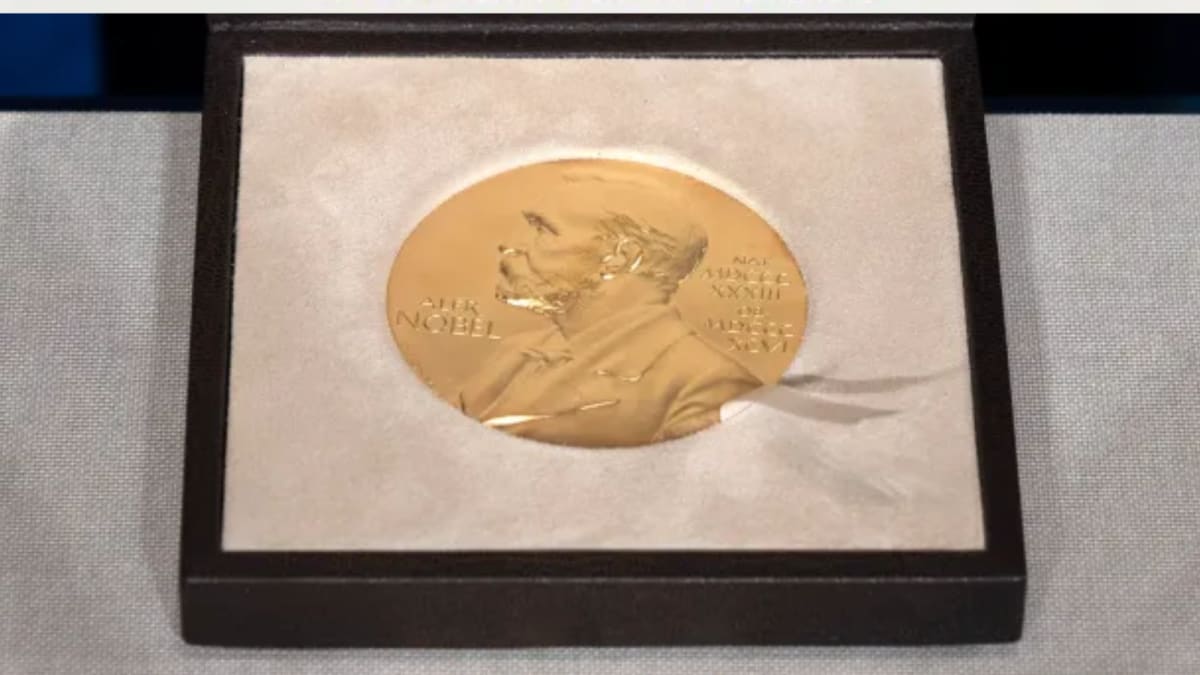- October 8, 2025
Meet 2025 Nobel Chemistry Laureates: Susumu Kitagawa, Richard Robson And Omar M. Yaghi

Last Updated:
Susumu Kitagawa, Richard Robson and Omar M. Yaghi win the 2025 Nobel Prize in Chemistry for pioneering metal-organic frameworks.

The discovery has opened an entirely new frontier in materials science.
The 2025 Nobel Prize in Chemistry has been awarded to Susumu Kitagawa, Richard Robson and Omar M. Yaghi for developing metal-organic frameworks (MOFs)- molecular structures with vast internal spaces that can trap gases, filter pollutants and even harvest water from the air. Announcing the prize, the Royal Swedish Academy of Sciences said the three chemists were being honoured “for the development of metal-organic frameworks.” These frameworks, made by linking metal ions with long organic molecules, form crystalline lattices full of microscopic cavities= “rooms for chemistry,” as the Nobel committee described them.
The discovery has opened an entirely new frontier in materials science, with applications ranging from carbon capture and clean energy to water purification and catalysis.
Susumu Kitagawa: The Pioneer Of Porosity
Born in 1951 in Kyoto, Japan, Susumu Kitagawa has spent decades exploring how molecules can be organised to create flexible, porous materials. A graduate of Kyoto University, where he also earned his PhD in hydrocarbon chemistry in 1979, Susumu Kitagawa is now a professor at the same institution.
He is credited with demonstrating that gases can flow in and out of MOFs and that these materials can be made flexible and “breathing”- expanding and contracting depending on what they absorb. His work gave life to the concept that these materials could act as dynamic systems rather than rigid cages.
Susumu Kitagawa’s contributions have earned him multiple international honours, including the Humboldt Research Prize (2008) and the De Gennes Prize for materials chemistry.
Richard Robson: The Architect Who Saw Potential In Space
Richard Robson, born in 1937 in Glusburn, United Kingdom, laid the foundation for MOFs long before the term existed. A chemistry graduate from the University of Oxford, Robson later moved to Australia, where he became a professor at the University of Melbourne.
In 1989, he achieved a breakthrough by combining positively charged copper ions with a four-armed molecule that could link to copper atoms at each end. The resulting structure was an elegant, spacious crystal- “like a diamond filled with innumerable cavities.”
Although the structure was fragile, Richard Robson recognised its revolutionary potential. His experiments became the blueprint for future MOF research, inspiring the next generation of chemists to refine and stabilise the idea.
Omar M. Yaghi: The Engineer Of Modern MOFs
Omar M. Yaghi, born in 1965 in Amman, Jordan, represents the modern face of molecular design. After earning his PhD in chemistry from the University of Illinois Urbana-Champaign in 1990, he built his career in the United States and is now a professor at the University of California, Berkeley.
Omar M. Yaghi created some of the most stable and versatile MOFs known to science. He also introduced “reticular chemistry”- the concept of designing crystalline frameworks through rational, modular assembly. This allowed MOFs to be built like molecular Lego blocks, with specific functions tailored to capture carbon dioxide, store hydrogen or conduct electricity.
His lab’s work has transformed MOFs from scientific curiosities into tools for addressing global challenges, from clean energy to climate change.
Delhi, India, India
October 08, 2025, 16:01 IST
Read More





